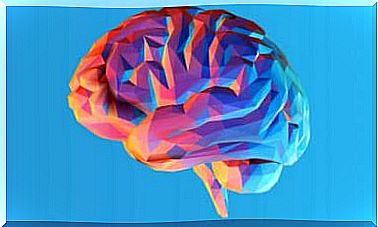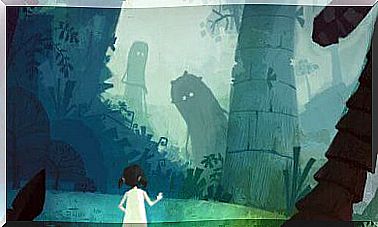Uncertainty, That Silent Slayer

Uncertainty is linked to our need to know what will happen next in order to be able to anticipate and control it and so that it does not catch us by surprise. Uncertainty is understood as a human motivation. Concretely, it encourages us, for example, to confirm that what we think or what our senses dictate to us is correct.
Although it varies depending on the degree and area in which it appears, for some people the uncertainty is unbearable. It is there that it acquires its motivating character because the person who “suffers” from it must act to reduce it, at least until it reaches acceptable levels.
There are people who tolerate uncertainty better than others. People who find themselves in a situation of great uncertainty use a lot of cognitive resources to resolve it and even more if their tolerance level is low. Two people may have been interviewed for a job, either need it as much as the other, but if one of them has a low tolerance for uncertainty, the most normal thing is that they try to find out. the result as quickly as possible. So, for example, she will not wait for the company to contact her: she will be the one to do so.
On the other hand, uncertainty can also arise when we know a person: we don’t know who they are and this can cause us to worry, to some extent. Since our cognitive resources are limited, cognitive shortcuts and heuristics are a good tool to reduce it quickly. These ways of reducing uncertainty are effective, but they also have negative consequences, such as people being stereotyped or prejudices arising when we compare ourselves to other people or groups.

Triggers of uncertainty
We are going to tell you about some of the causes that create this uncertainty. You may identify with one or more of them!
- One source of uncertainty is the contradiction between expectations and the signals that reality gives us. Let’s say we’ve had the interview we talked about before and it went really well, so we come out thinking the job is for us. However, the days go by and we do not receive a call, this being a usual indicator that the person will not be given the job. So, if we relate the security we had when we left the interview and this contradictory signal, it is more likely that this feeling of uncertainty will continue to increase.
- Another source of uncertainty arises from the opposition between conduct and values. When we perform actions that we do not agree with, our uncertainty increases. Returning to the example of the interview, if, out of need, we are going to be interviewed for a job that does not correspond to the beliefs we have, our uncertainty will also increase. An example of this type that is very well reflected in the movies is when an environmental lawyer starts working for a company that destroys nature. These behaviors can create anxious states of uncertainty in addition to cognitive dissonance.
- Social injustice also appears as an element which produces a certain degree of uncertainty. The injustices that we experience on a daily basis and that other people experience can make us feel uncertain if we are not able to address them. The lack of control over these injustices makes us doubt our ability to predict the future. Faced with this situation, a certain attraction for extreme ideologies and groups that promise to end these injustices tends to appear.
Uncertainty from social psychology
Uncertainty, from the point of view of social psychology, is understood in different ways. One of them is to explain it as a need for cognitive shutdown. This need for (cognitive) cutoff can be defined as the desire to give a quick answer to a question that has confused and ambiguous content.
The theory of the need for a cut has its source in an epistemic analysis (a body of knowledge that conditions the ways of understanding and interpreting the world) in which the motivation for cutting off or uncertainty satisfies the essential function of interrupting the incessant search for ‘information.
So, when we feel uncertainty, we look for information that we consider to be true to reduce it. When we find this information, it becomes essential knowledge for everyday life.
The need for cognitive break seeks the crystallization and simplification of proper knowledge. This search for information that generates knowledge causes differences to appear between people, depending on the information that each of them selects.
If, to reduce the uncertainty caused by waiting for the results of the job interview, I accept the idea that I will not be selected and someone else accepts the idea that this company is putting a lot long to make a decision on who is going to be chosen, we will have very different and simplistic ideas about how this business operates. Our expectations, as the days go by without any results, will be more and more different.

This knowledge that we gradually acquire about the functioning of the business can also change, even people with a high need for a cut can, under certain circumstances, be (temporarily) open-minded as they seek a cut. cognitive.
If after that we go to another company for an interview, we will probably tell the managers that we need to know the decision quickly. If the same thing happens and they take a long time to respond, we will again be overcome with uncertainty and we will try again to reduce it.
In this case, our interpretation that they will not hire us will no longer serve us as they should have communicated it to us. The need for a cut will bring us into a state of “emergency” and make us look for another plausible interpretation as quickly as possible. For example, that the company accepted us and that we passed the interview phase.
Once cognitive cutoff is established, people with a high cutoff need tend to hold the same biases and be impervious to any new information. The new idea about the behavior of the company is more resistant than the first and we will not change it again until new information contradicts it, such as confirmation that we have not been accepted.
What happens when the need for outage is high?
The need for cognitive shutdown, once it arises, can affect a wide range of group phenomena. The function of the cognitive cutoff is to create a shared reality, coherent with a group. If the knowledge that our group brings to us does not reduce our need, we will look for another group that will.
People who need a cognitive break are also more concerned with reducing uncertainty quickly rather than doing it the right way. Cells with a high clipping need create impressions faster, and with more limited evidence. They normally base their judgment on common stereotypes and display biases as a fundamental attribution error. They also look for fewer alternatives when solving problems, they are less empathetic with people who think differently, and fail to adapt their language when they have to explain their thoughts to other people.
Those with a high cut-off need overcome uncertainty by accepting the first information they get to draw conclusions, and later accept that conclusion without questioning it. These people seek orderly, predictable and familiar social contexts.
Beliefs and social norms shared by group members provide certainty about how the world is, what needs to be done in different situations, who they are and what they matter. Therefore, groups provide the contexts sought by these people in addition to being their greatest source of certainty and knowledge.









